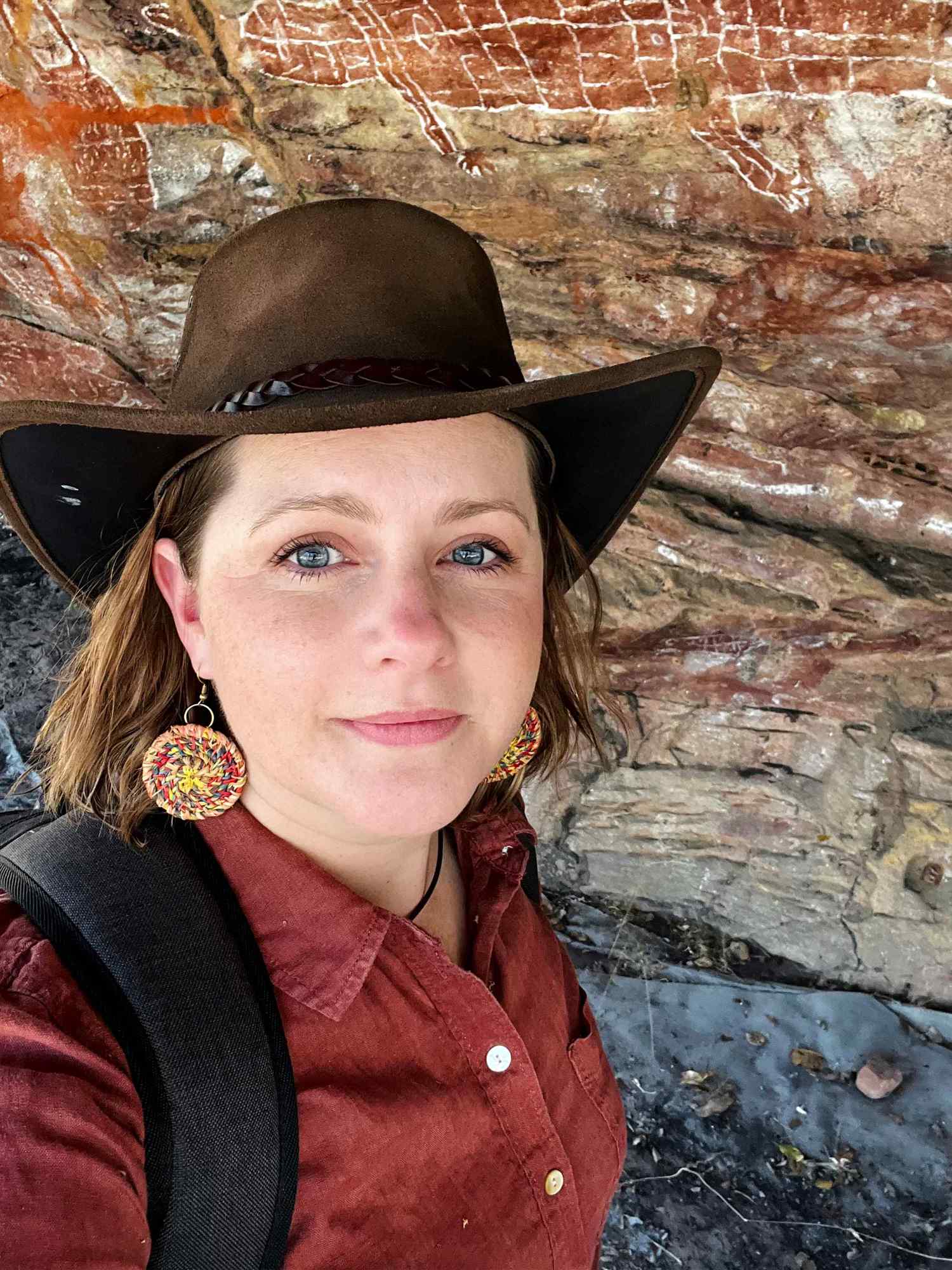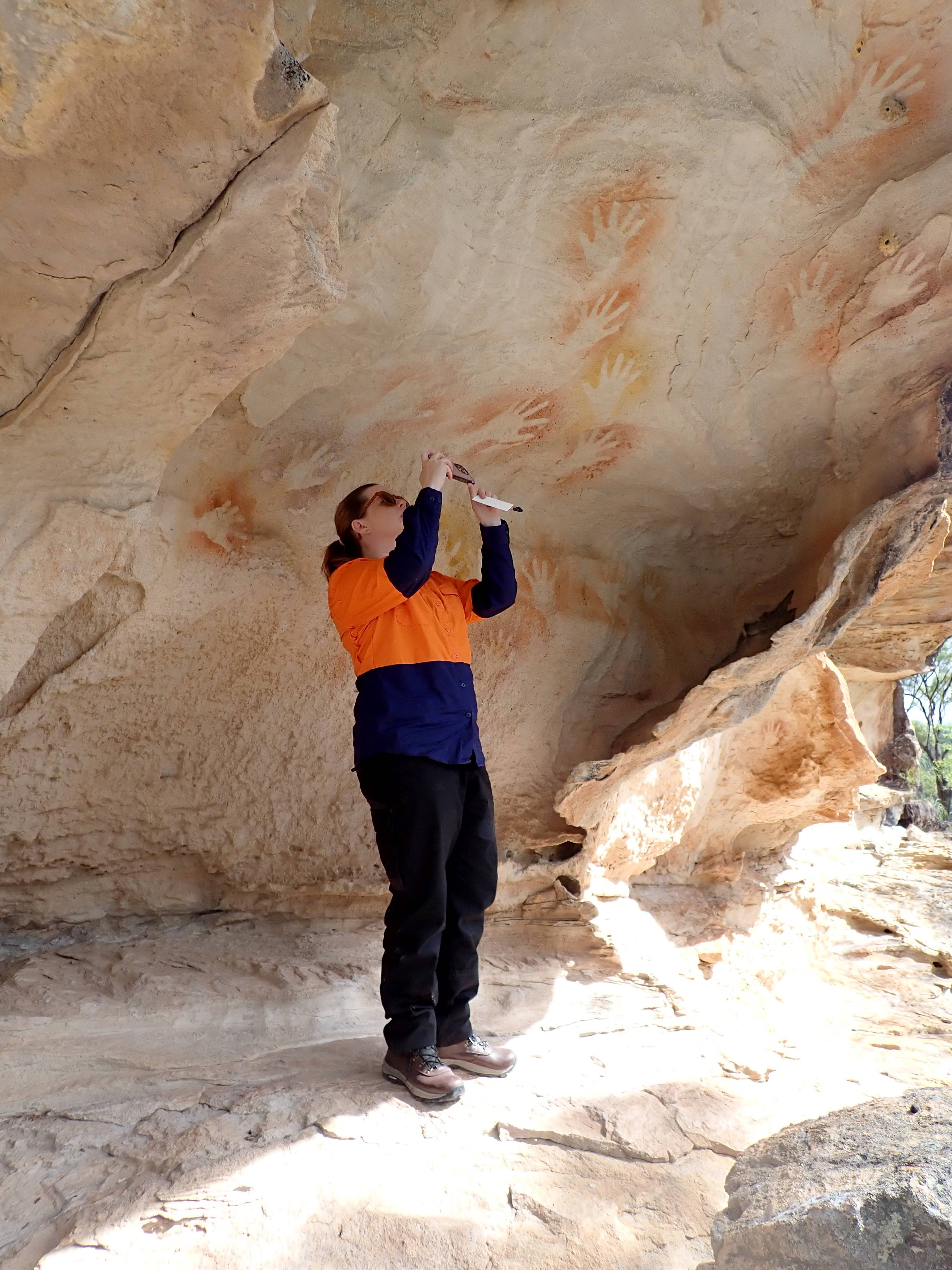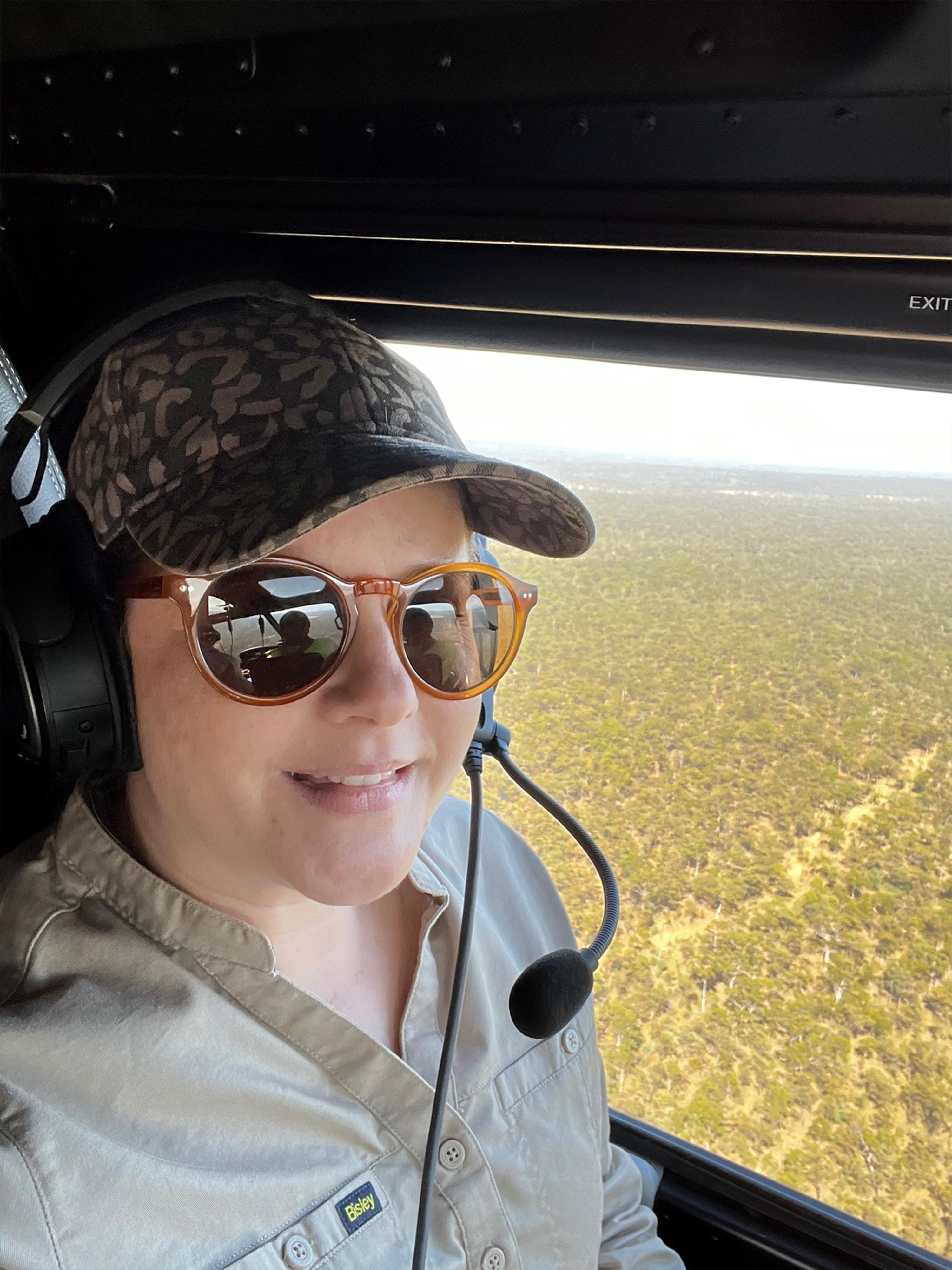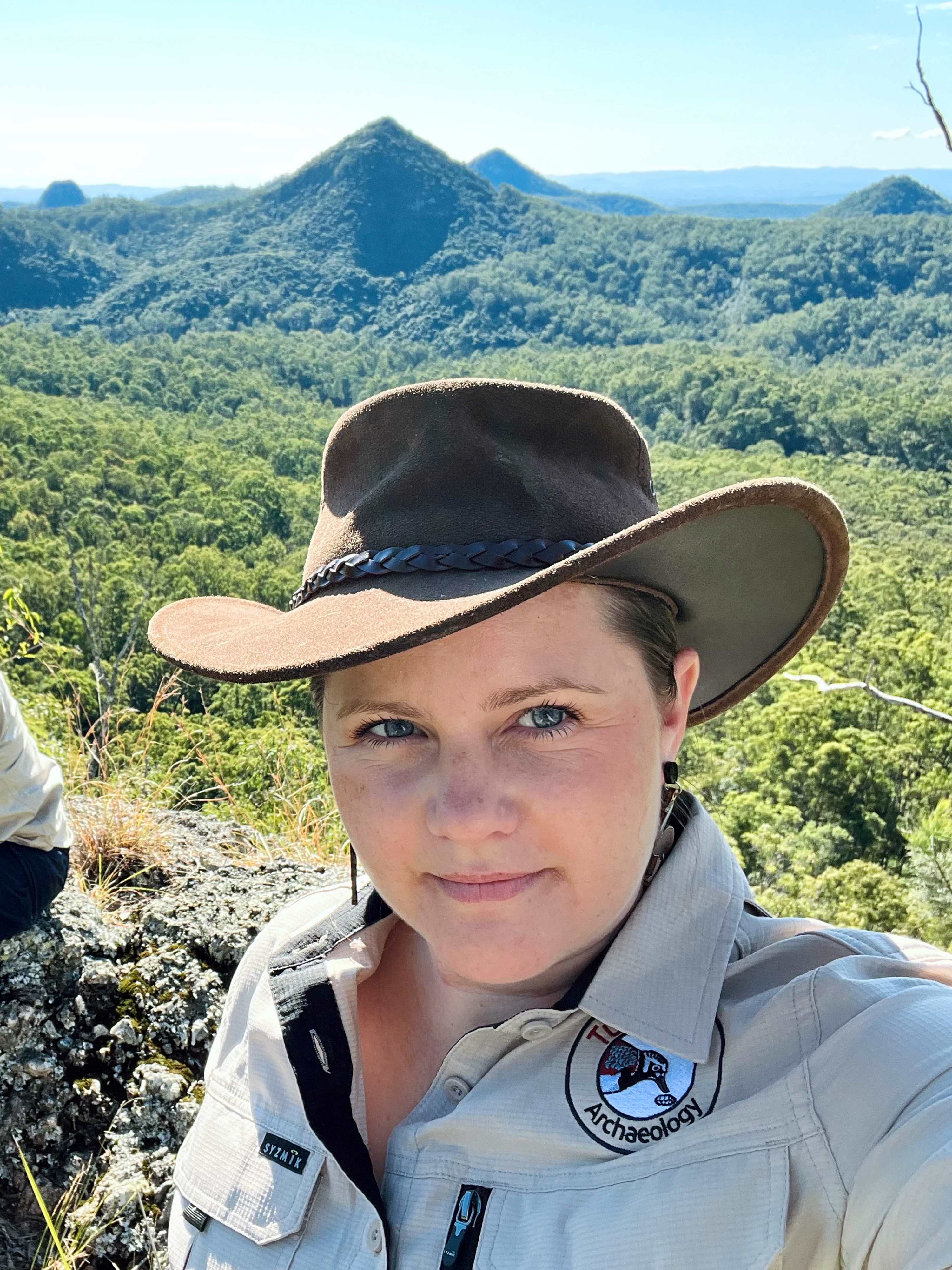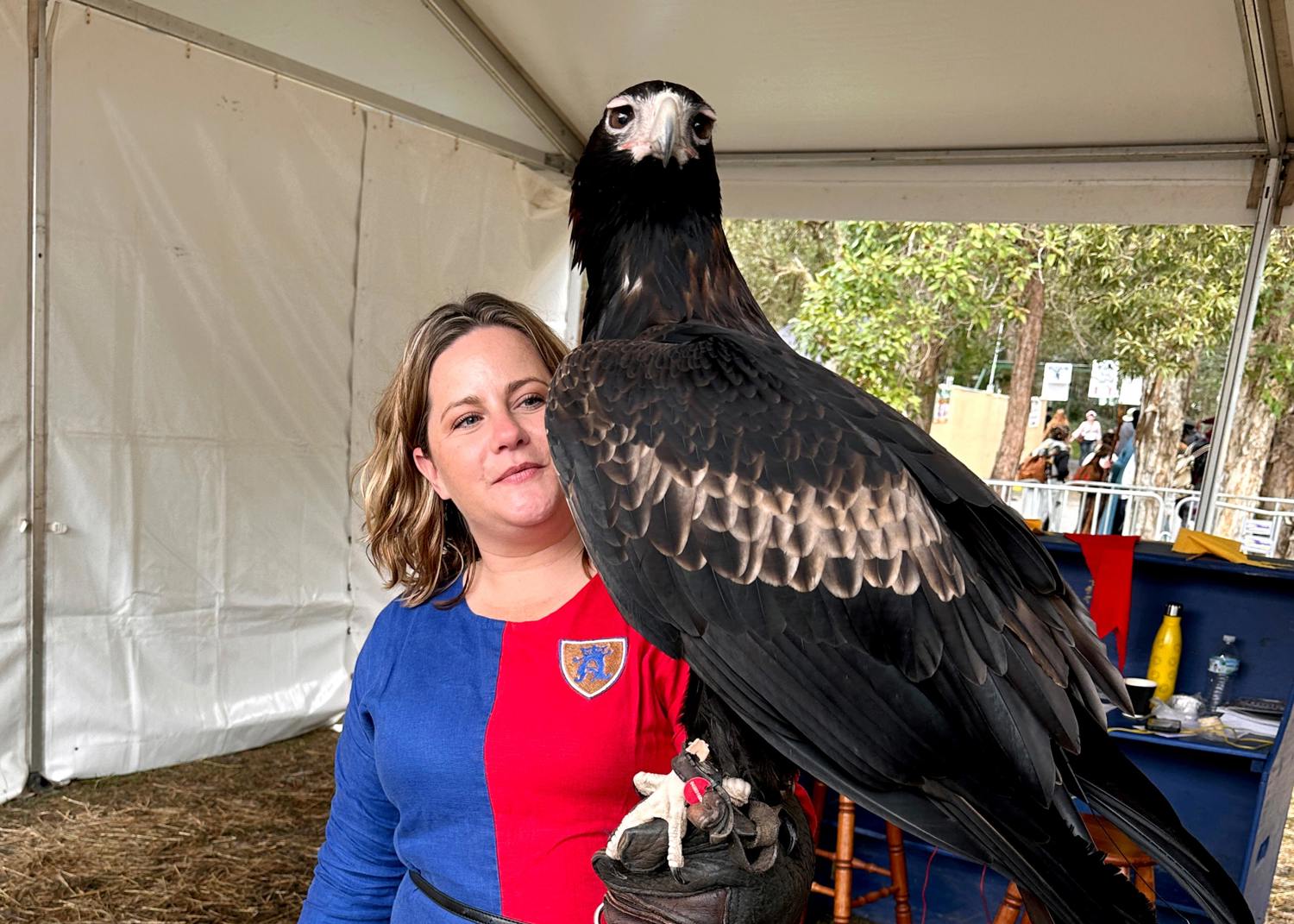For archaeologist Nadia Arrighi, a passion for history, humanity, and a flexible Arts degree at UniSC served as the catalyst for her transition from museum volunteer to uncovering ancient treasures in Australia's remote landscapes.
One day might find Nadia trekking through rugged, remote landscapes only accessible via helicopter, cutting through dense lantana shrubs, and marvelling at just-discovered ancient rock art in far-flung areas of Australia. Other days she sits at a computer, meticulously drafting reports that will help Aboriginal and Torres Strait Islander corporations preserve their cultural heritage.
“Sometimes I’m climbing a mountain, and I think, ‘Oh my God, I can't believe I'm getting paid for this,' but then there are times when I’m just sitting in the office writing reports for weeks on end,” she says with a laugh.
Yet for Nadia, it’s the historical and community aspects of her day-to-day work that keeps her passionate about archaeology, especially the focus on relationships.
“When I’m out on surveys, sometimes it feels like hardly any of it is archaeological it’s all about relationship building,” she says.
“We work pretty much exclusively with Aboriginal corporations and communities, and it’s 90 percent about relationships, which is the part I really like.”
Archaeology is a field that balances technical science with human connection, something Nadia believes she was well prepared for by her Bachelor of Arts degree from the University of the Sunshine Coast (UniSC), which she graduated with a perfect 7.0 GPA.
She majored in history and sociology and minored in Indigenous studies, also completing enough credits for a minor in human geography. This combination proved invaluable to her career path that truly began to take shape while studying at UniSC. The degree's focus on critical thinking and embracing complexity also proved to be vital for fieldwork, where things rarely go as planned.
“The flexibility of the Arts degree is really its strong point,” she says.
“I learned to sit with the messy and complicated things, which is a real skill that some people don’t have, and in the field – when things don’t fit neatly into boxes – it can cause meltdowns for some, but I’ve learned to think in a more holistic way.”
Before Nadia found her place in the world of archaeology, she had explored other careers. Straight out of high school, she studied two years of a business and law degree at another university, which she left to work.
Nadia worked in pharmacy for several years, and while she “really loved the community aspect” of the job, she longed for a career that was people-centred and combined her love for history and the arts.
When she enrolled in a Bachelor of Arts at UniSC, Nadia thought museum studies would be her path. She was already involved with the Abbey Museum, where she volunteered in the education department teaching high school students about archaeology using the Museum’s mock Egyptian and Roman digs.
“It was really fun, and I realised I liked archaeology… but at the same time, I had heard how impossible it is to get a job in the industry,” Nadia says.
By chance, the senior curator at the Abbey Museum also ran a consulting company called Turnstone Archaeology. Nadia, who had already expanded her volunteering at the Museum to include office work and managing public programs, was approached by the curator with an opportunity to assist at Turnstone Archaeology.
“Once I was in that world, after my first field trip, I realised it was exactly what I wanted… I found my groove,” she says.
“Then I took a history class with Dr Marcus Bussey at UniSC and just loved it.
“My lecturers, especially Dr Bussey and Dr Amy Clarke, were so supportive and happy to let me follow my interests and go off on tangents, which really helped because I could apply my studies to the stuff that was helpful for work too.”
Nadia was in the final year of her undergraduate degree when she was offered a job at Turnstone Archaeology. She then went on to complete a first class honours at UniSC is now enrolled in a Masters of Archaeology at the University of New England.
“My Arts degree gave me a really nice base to then go into archaeological studies... I got basically half of my Masters degree credited because of the history subjects that I had done while at UniSC,” she says.
What appeals to Nadia most about archaeology isn’t the typical image of dusting off ancient artifacts, but the human connections that come with the work.
“Archaeology uses scientific techniques, but it’s really a humanities subject because it’s about human culture and working with people,” she explains.
When asked where she’d love to go if she could explore any archaeological site in the world, Nadia says her heart lies in Australia’s vast, untouched archaeological landscapes which are “full of possibilities.”
“My dream archaeology job is here in Australia… I’d love to explore the Kimberleys or some of the sand country and rock art in Queensland,” she says.
"People often imagine archaeology as digging up ancient Roman roads, but those European sites have been picked over countless times, while here in Australia, there are so many incredible places that remain untouched and unexplored."
On one remote expedition, she and her team stumbled across a hand axe stone artefact, just “sitting there perfectly preserved,” that the landowner’s family had no idea existed.
“There are so, so many places like that in Australia that haven’t been looked at… and, we have this amazing resource that no one else has, in that we still have living cultures here,” she says.
One of her most moving experiences was sharing newly discovered rock art with traditional owners who were on the expedition, two of whom had never seen rock art before.
“Seeing their reactions to being close to their culture and getting to see that for the first time was the most special part of being there,” she says.
Nadia also gets to indulge her love of history as the president of the Abbey Museum Friends and as a coordinator of the annual Abbey Medieval Festival.
“The best advice I received was from Dr Bussey in my first year at UniSC; he told me, ‘Go have other experiences, even in small ways — find a talk that interests you or explore cultural events like galleries and museums.’ That advice led me to volunteer at the Abbey Museum, which led me to archaeology," she says.
"It’s about putting yourself out there, experiencing as much as you can and following the things that interest you.”
Media enquiries: Please contact the Media Team media@usc.edu.au


